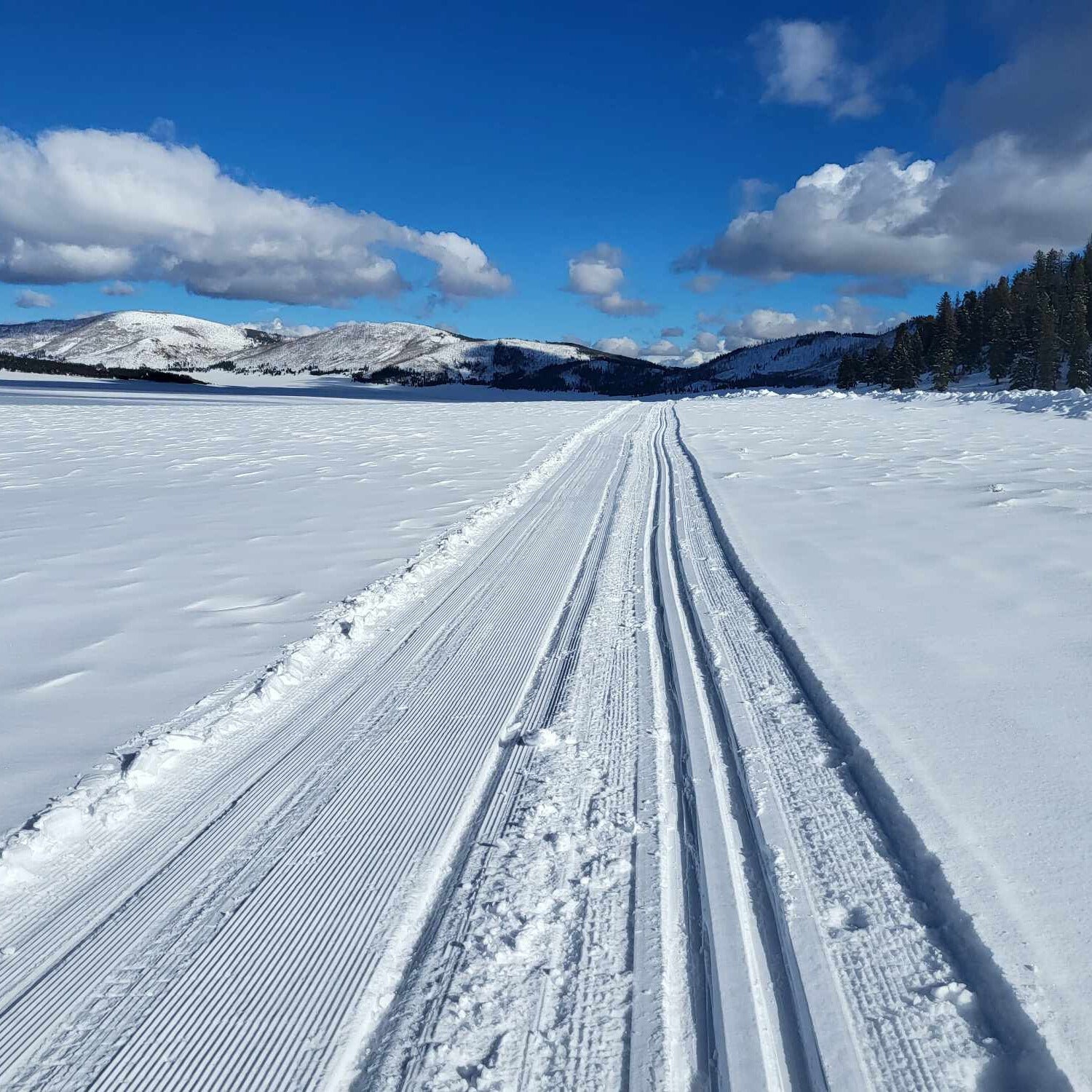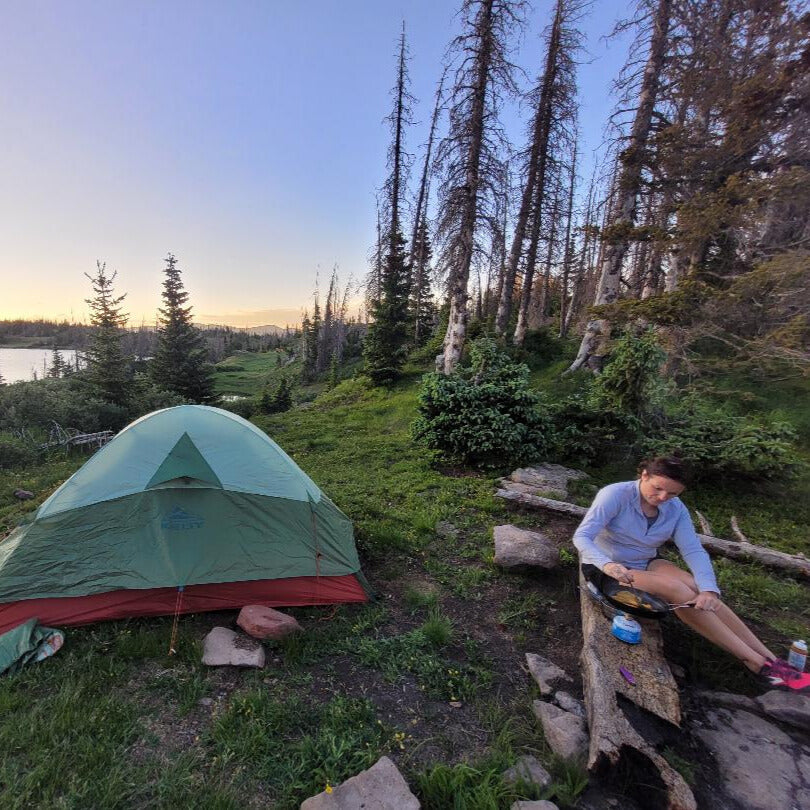Your Cart is Empty
accepting gear drop offs Mon-Sat 10am-5pm. No Consignment acceptance on Sundays.
accepting gear drop offs Mon-Sat 10am-5pm. No Consignment acceptance on Sundays.

Here at the Durango Outdoor Exchange, we care a lot about keeping gear in play for as long as possible. It benefits our community, our business, and the environment. The main way that we facilitate this is by reselling used gear on consignment; it often surprises folks that almost 70% of our inventory is used gear! From sleeping bags to mountain bikes, camp stoves to kayaks, hiking boots to snowboards, we sell all kinds of used outdoor clothing and equipment.
Another way to keep things in play for longer is to fix them when they break. Although DIY gear repair can seem daunting, in fact the most common issues can easily be repaired at home with the right materials and just a little bit of know-how. Many repairs can be accomplished with tools and materials that you might already have at home. To help you out, we also carry a selection of affordably priced gear repair and restoration products from Gear Aid and Nikwax.
This article will cover some common issues with soft goods like garments, backpacks, tents, etc., and offer some simple at-home fixes. There is, of course, always a time and place for professional repair, which we always encourage as an alternative to sending an item to the landfill—I’ll also discuss how to tell when an item is worth the time and expense of a professional repair.
Zippers
Zipper problems are among the most common issues that we encounter on used gear here at the Exchange. Luckily, the vast majority of zipper problems are easy to fix! Let’s run through a few steps to troubleshoot and repair your zipper.
While they might seem complex, most modern zippers use a relatively simple 100-year-old design. Rows of interlocking teeth are connected and separated by a wedge and a pair of shaped flanges. Zippers can stop working for a variety of reasons, but problems can usually be traced back to dirt or debris in the teeth or slider, sticky or unlubricated teeth, or a damaged slider. This troubleshooting guide will address all of these common problems.
If your zipper mostly works but sometimes gets hung up or zips slowly, the problem might be solved with some cleaning and lubrication.Start by cleaning the zipper thoroughly to remove any sand or dirt. Then apply a lubricant. Use a commercially manufactured zipper lube for the longest-lasting fix. It comes in both solid (like a giant chapstick) and liquid form. Solid lubricant is easier to apply but can attract dirt, while liquid lubricant has a drier finish. We sell both options for $5.95 (liquid) and $6.95 (solid).
If you’re in a pinch, you can also just use normal chapstick!This is a great trick to get your zipper back in working order while you’re out on an adventure. It’s not quite as good as real zipper lube, but it can definitely make a difference. I’ve used chapstick on my tent zippers more than once!
If a clean and lube doesn’t fix it, the next thing to look at is your zipper slider.The slider (also known as the zipper pull) is the metal or plastic piece that moves up and down the rows of zipper teeth. Sliders can easily become damaged. This can manifest as a couple of different problems, depending on the severity of the issue. At the extreme end, a damaged slider might prevent the zipper from closing at all. If the damage is less severe, it might cause the zipper to seem slow, noisy, and difficult to operate.
If your zipper slider is metal, slider issues can often be solved with a pair of pliers. First, remove the slider from one side of the zipper, if possible. Then inspect it for any deformation. If it seems bent, try to bend it back straight! It’s really that simple.
If that doesn’t work, or the slider doesn’t seem obviously bent,you can also try squeezing the entire slider body between the jaws of your pliers. Sometimes the internal wedge can become misaligned, and squeezing the slider will push it back into place. This simple fix is very successful in a surprising number of cases.
If you can’t solve the problem by bending your zipper slider, or if you have a plastic zipper slider, you’ll need to replace it with a new one. Luckily, this is a relatively cheap and easy repair. We sell easy-to-install replacement zipper sliders from FixnZip for just $10.99. They’re designed as replacement zippers so they’ll also realign any bent or missing teeth—as long as the damage isn’t too severe (like several missing teeth in a row) the FixnZip should do the trick.
If the FixnZip doesn’t do the trick, unfortunately you’re going to need an entirely new zipper. Remove the FixnZip and save it for another time, then consider a professional repair to replace the zipper. Some high-end garment brands, like Patagonia, will do this for free or at a discounted price if you ship it to their warehouse. However,instead of paying to ship your garment across the country, we suggest spending your dollar locally. Here in Durango, there are a number of excellent folks that specialize in repairing outdoor equipment and apparel. On the Mend and San Juan Sewing are the shops we typically recommend to customers. The cost of every job depends on the complexity of the garment being repaired and the price of the replacement materials, but a professionally replaced zipper is usually no more than $25 or $30 and will get your garment back into better-than-new shape! Plus you’re supporting local craftspeople and keeping an item out of the landfill.
Waterproof zippers deserve special consideration.These are often found on drysuits, packrafts, mountaineering boots, and waterproof luggage. These zippers are typically plastic and rubber, although you might encounter metal and rubber zippers on older drysuits. Do NOT attempt to bend or fix the zipper pulls on a waterproof zipper; unfortunately this could compromise the seal. If your zipper is completely broken, you must send it back to the manufacturer for repair. However there is some simple maintenance you can do to keep your waterproof zipper in top shape.
Waterproof zippers require regular cleaning and lubrication to function properly. TIZIP, a German company, is the dominant brand, and most new products with a TIZIP should come with a little bottle of lubricant. Depending on my model of zipper the procedure is either to rub some lubricant across the CLOSED zipper (SuperSeal style, typically found on packrafts and mountaineering boots) with a clean cotton cloth, or to apply a drop to the inside of the zipper dock (MasterSeal style, typically found on luggage and drysuits, seen below). After lubrication, run the zipper across it’s full length a couple of times to evenly distribute the lubricant.
Normal zipper lube doesn’t work very well on waterproof zippers; if your product didn’t come with TIZIP lubricant, you can order a tube online for a couple of bucks. And of course, you should always consult the manufacturers care and use guidelines for whichever model of zipper you have.
There are a wide variety of fabrics used in modern outdoor garments & equipment. The best way to patch a rip or tear often depends on the type of fabric.
For fabrics with a ‘slick’ face (think rain jackets, some backpacks, etc.)repair tape is a great option. There are several different styles of repair tape, the most common being adhesive-backed siliconized nylon (silnylon). We carry the industry-leading repair tape, Tenacious Tape from Gear Aid, which hits a great balance between flexibility and durability. We sell patches for $3.75 and entire rolls for $5.95.
In order to make your repair tape fix last as long as possible, round the corners with a pair of scissors. You should also use a smooth blunt object, like the bottom edge of a Nalgene bottle, to rub the repair tape patch into place. This works best if you place a solid object, like another Nalgene, on the opposite side to press against.
Once you make it back home, you canmake your patch even stronger by adding some heat with a hair dryer or an iron (on the lowest setting) and rub the patch in again. By rounding the corners and taking your time to ensure good adhesion, you can craft a repair tape patch that will last many years and countless trips through the washing machine.
A couple of specialized repair tapes are also available. For garments designed to stretch, a stretchy tape will last longer and preserve performance. You can also get waterproof-breathable patches for membrane fabrics like Gore-Tex; while not necessary for a strong repair, these patches allow unhindered breathability, an important consideration if you are patching a large area.
Another type of tape to consider is Tyvek tape, available at most home improvement or hardware stores. It’s expensive, usually more than $15 a roll, but one roll can patch many dozens of garments. Tyvek tape works really well for theinsideof membrane fabrics like Gore-Tex; combined with a Tenacious Tape patch on the outside, it makes a bombproof repair. Tyvek tape is also great for cuben fiber, a less common material but one that you might find in high-end ultralight equipment like tarps and backpacks.
For cotton canvas or heavy nylon with a ‘rough’ face (older backpacks, pants, etc.), the longest-lasting fix is going to involve some sewing. While repair tape will work on cotton fabric, it won’t last as long as a sewn patch. I would suggest using some repair tape in the short term, but investing $10 or so in a professional repair when you get the chance. Of course, if you have access to a sewing machine, or a sewing kit and a lot of patience, you can tackle the repair yourself.
I’d advise against using duct tape to patch up your outdoor garments. While this might be a great short-term fix to get you home, duct tape isn’t a great long term solution. It’s not very strong, not very abrasion resistant, and it’ll quickly turn into a gummy mess in the wash. Patches that fall off aren’t just ineffective—they often become litter. Nobody likes a litterbug. And yeah, it might give you some dirtbag street cred... but do you know what’s even cooler than looking like you don’t buy into the disposability of the modern day? Actuallyliving the philosophy of repair, and fixing your gear properly to keep it out of the landfill for as long as possible. Responsible is cool. Invest a few extra bucks and a few extra minutes, and keep it in play for as long as you can.
I’ll see you out there. I’ll be wearing my patches with pride!
Written by Carl Schnitker

Thanksgiving is almost here–and skiing this early is always a gamble. Here are some non-skiing warm(er) weather destination ideas for the long break.

Just a couple hours from Durango, Valles Caldera is a great cross-country skiing destination, with surprisingly good snow and very few visitors.
Valles Caldera National Preserve is a popular hiking destination in the summer and a surprisingly great skiing destination in the winter.

When spending one night (or many) in the backcountry, a warm dinner at night and hot beverage in the morning can make the difference. That invariably involves using a stove of some sort–but which one?
Stove technology has been around for decades, but new tech is making them lighter, more efficient, and more dependable than ever before. Here’s a rundown of the different kinds of backpacking stoves: